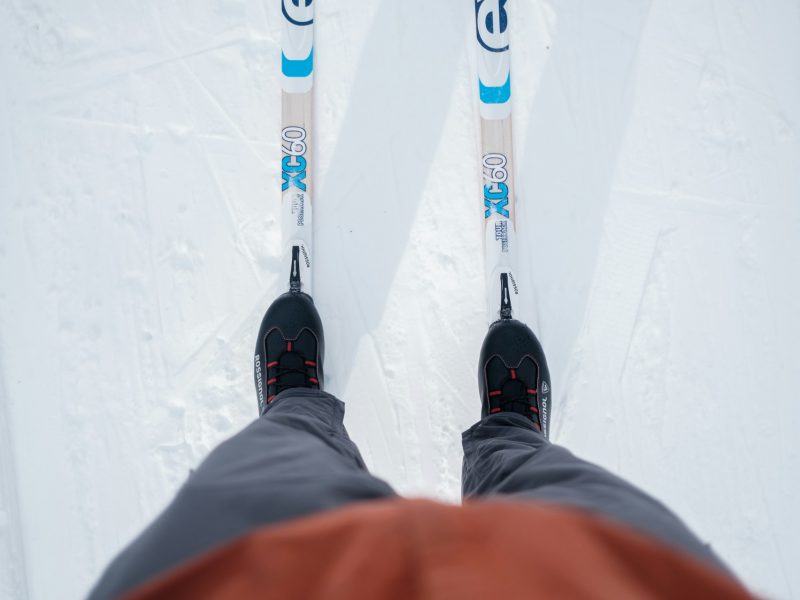A debate over municipal priorities in Alta, Norway, has ignited fierce local backlash after a politician suggested cutting funds for community ski trails to save a local youth center.
The “Stereotypical” Proposal
The controversy began when Tore Grøtte (SV) proposed that cutting the budget for grooming local ski trails would be a “less painful” cut than reducing services for young people at “Huset” (The House), Alta’s youth center. Grøtte claimed that the ski trails primarily benefit “men in their fifties,” a justification that has been met with widespread disbelief and anger from community members.
Fact-Checking the Slopes
Critics immediately labeled the politician’s view as a “stereotypical” and factually incorrect assessment of who uses the trails. Local ski clubs report that youth participation, in fact, has been booming following a significant recruitment push after the COVID-19 pandemic.
In the BUL ski and biathlon club, for instance, a stable group of about 25 children aged seven to ten now participates. At Kaiskuru, 40 children attend Alta IF’s trainings for the youngest athletes, with similar high attendance in Dalen. Furthermore, hundreds of local children regularly participate in the season’s ski cups organized by BUL. As one resident noted, the proposal was so out of touch it was enough to make one “choke on their Friday taco.”
A Public Health Imperative
For many in Finnmark, where the winter can last six months, the issue is about more than just sports; it’s about public health. The dark, heavy winters are challenging, and community advocates argue that providing accessible, well-groomed trails is an essential service that gets people of all ages outdoors.
The trails, they argue, function as “antidepressants, ACE inhibitors, and beta-blockers in natural form.” After weeks of pre-season “dry-land” training on icy ground, local children are reportedly desperate for the snow to fall so their ski training can actually involve skis.
Fighting the Screen-Time Battle
The volunteers and organizers behind the youth ski programs frame their motivation in stark terms: they are actively fighting the modern trend of screen time and sedentary lifestyles. They aim to provide a crucial supplement to organized team sports, giving children the simple joy of moving outdoors.
A stated goal of the training is to ensure all children get tired, exposing them to physical discomfort. Organizers believe this is essential for building “robust youth who can withstand resistance” in the future, seeing their work as a critical, difference-making contribution to the community.
A False Choice
What makes the debate particularly complex is that the trail defenders are also passionate supporters of Huset. They acknowledge the youth center’s vital role as a creative sanctuary, a social hub, and an essential meeting place. They highlight its “away-from-home dinners” as a critical service for high school students who must move from their hometowns to attend school.
The core of their argument is that Grøtte is presenting a false choice. They contend that a community cannot, and should not, pit two different but equally vital public services against one another.
The Bottom Line on Funding
While proponents of the trails admit they “get a rash” looking at budget spreadsheets and don’t have all the fiscal answers, they insist the money involved is just “tiny drops in a large drain.”
The consensus among critics is that Alta, as Finnmark’s largest city, absolutely must find the resources to maintain both its youth services and its public health initiatives. In the long run, they argue, investing in both is essential for the future of the city’s children. As one opponent concluded, welcoming Tore to join them on the slopes: Alta needs its varied recreational offers, it needs Huset, and it also needs more “men in their fifties” out on the trails.
Investment in the Sport’s Technical Future
Even as the community in Alta debates the funding for public access trails, investment in the technical and organizational side of the sport continues elsewhere in Norway.
The Nord-Trøndelag Ski District, for example, is inviting race organizers and Technical Delegates (TDs) to a series of professional development courses this November. The stated goal is to determine “How can we create and execute good ski arrangements together!”
The courses are targeted at current and future TDs, event managers, club leaders, coaches, and other interested parties. Three identical evening sessions are being offered: in Steinkjer on November 18, Åsen on November 19, and Grong on November 20. All designated organizers for the 2025/2026 season’s scheduled races are expected to be represented, with an RSVP requested for catering.
